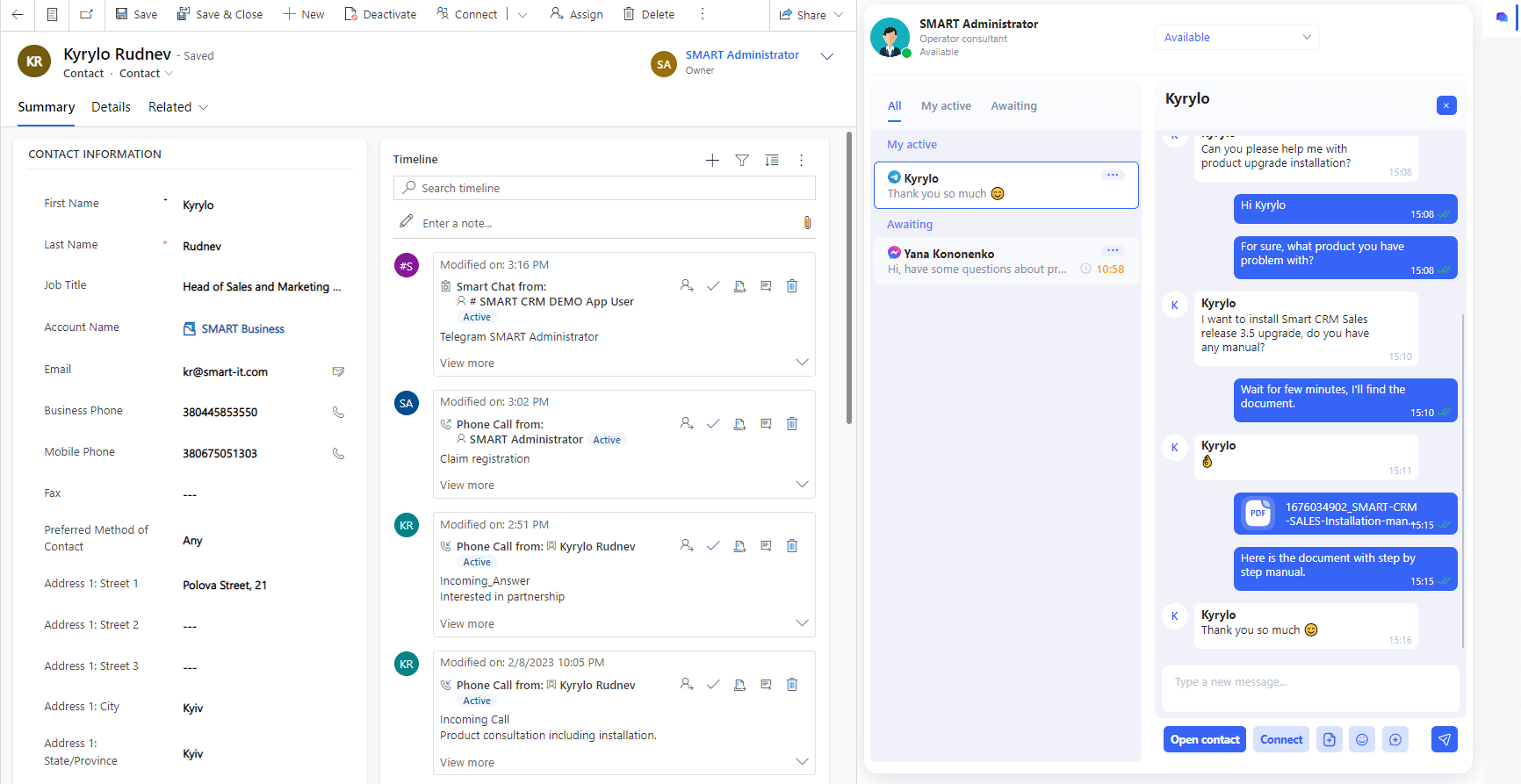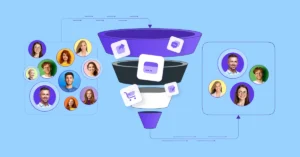5 customer service trends you should pay attention to right now

The last few years have been challenging for businesses, which have had to quickly adapt to the new reality and respond to challenges. It has been a great effort to meet rising customer expectations and adapt to changing needs in an unstable economic environment.
Today, many people talk about the importance of building strong and lasting relationships between a company and a customer: the first contact, purchase of a product or service, after-sales service, repeat purchase, etc. Positive customer experience encourages customers to come back to the company and eventually builds brand loyalty.
In fact, more and more attention is being paid to the overall customer experience and the transformation of business models to create a convenient environment for both customers and employees. Gartner predicts that by 2026, 60% of large enterprises will use total experience to transform their business models to achieve world-class customer and employee experiences. This growing recognition is a positive indicator that service is finally being recognized as a core business value driver, as support teams have become the key to maintaining customer loyalty and attracting new customers during the COVID-19 pandemic.
But are businesses ready to face the challenges and able to provide this level of service on a large scale? The search for tools that help to win back customers and grow their loyalty every time is a pressing issue.
What makes a service customer-centered
How to grow a customer for life out of a casual call? Recognize them the second time! By automating and using intelligent systems, you can not only store information about customers and the history of interaction with them, but also significantly strengthen your business with new channels and additional functionality. The customer expects that with each subsequent interaction we will accumulate and store information about their preferences and needs and update their contact information. This simplifies the customer’s path to the desired purchase or service and allows us to improve the quality of service.
This is what makes a business modern and humane and what companies should strive for in their interactions with customers:
- Ecological communication
- Simplifying the path to purchase
- Quick responsiveness to requests
- Knowledge of your audience
- All channels of interaction in a centralized system
- Personalization
- Loyalty
- Unhindered communication
The latest trends show that people change their preferences very easily and leave businesses where they don’t like something. Therefore, pay attention to customer needs, implement tools and technologies that will take your service experience to the next level, differentiate your brand, and ultimately help you become a leader in your industry.
Five trends in customer service modernization
1. Expand your omnichannel customer experience
According to recent research, 63% of customers expect companies to offer services through their social media channels, and 90% of social media users have already used social media to communicate with a brand or business.
Companies are looking for new approaches, following their customers to new platforms. At the same time, they do not forget about offline: after the pandemic, the “live” format is gaining popularity again. As a result, the client gets the opportunity to interact with the company on many levels – omnichannel. All communication and sales channels work as one.
Solutions from SMART business: SMART Chat is a module that allows you to build clear communication with customers, partners, and employees within a single platform using familiar messengers. It combines all messengers in a single window of the system, records the history of each interaction to provide personalized recommendations for each client. The solution expands the possibilities of contacting through a customer-friendly interaction channel for effective omnichannel communication.

2. Create conditions for customer self-service
AI-powered chatbots are leading the way in intelligent self-service. Bots serve as the first point of contact for customers, reducing their disappointment with long waits and providing round-the-clock, instant online support. A quick response to a problem can be crucial to retaining a customer or moving them to a competitor. According to Gartner, chatbots will become the primary customer service channel for about a quarter of organizations by 2027.
Thanks to AI-powered chatbots, customers get answers to their questions at the same time and in a convenient format. This self-service option is becoming more and more popular and in demand among customers, and the technology is becoming more accessible. Create the conditions for customers to find answers and information on their own in a knowledge base, online community, or portal before contacting a support agent. These important self-service options free up agent resources, allowing them to focus on high-priority, complex issues and improve overall customer satisfaction.
In a McKinsey survey of customer service executives, nearly two-thirds of respondents who have managed to reduce call volume identified improved self-service as a key factor.
Solution from SMART business: SMART Easy Bot is a module with a user-friendly interface for easy and comfortable management of chatbots in Viber and Telegram. A service that allows you to communicate with subscribers in a simple and comfortable way, manage buttons and their functions, as well as send mass and personal messages to subscribers in selected segments.
3. Build customer loyalty through personalization
ustomers want businesses to quickly recognize them as individuals and customize their service experience. Personalization is not only about knowing your customers, their contact information, and purchase history, but also about being able to understand and respond to their moods in real time. Create personalized offers based on each customer’s profile, using their current and past interactions and user data to improve their experience. This can be as simple as greeting a customer by name and automatically placing an order based on their email address or phone number, or it can be proactive customer service.
RedPoint Global noted in its research that 63% of consumers expect personalization as a standard
of service and believe they are recognized as a person when special offers are sent, and 80% of customers are more likely to make a purchase when a business provides a personalized experience.
This trend towards personalized service demonstrates the value of customer relationships, increasing CSAT (Customer Satisfaction Score) and strengthening loyalty, while significantly impacting the company’s bottom line. However, it’s worth remembering that although the task of processing customer data is easily solved by technology, human attention and respect should come first. Otherwise, personalization can even be harmful.
4. Increase the productivity of agents
According to McKinsey, over the past two years, customer service leaders have seen a sharp increase in the number of employees working from home – in some cases, up to 85% of the total workforce.
Because agents can work from different locations and are not always tied to an office, they need new tools to find the right specialists to help solve customer problems. The right data at the right time is the key to providing agents with enough information to respond quickly to requests and accurately meet customer needs.
Advances in AI, especially natural language understanding, provide real-time analysis of conversations and the ability to surface information and knowledge at any given time. Agents can receive alerts about similar cases and successful resolution steps, as well as advice customized to the current context. All of these capabilities help support agents resolve customer issues faster, increasing resolution rates and customer satisfaction.
This is a win-win for everyone – customers receive proper service and feel important, and the operator succeeds in their part of the process. Thanks to artificial intelligence, problems can be solved much faster.
5. Automate processes and manage your business efficiently
Many customer service managers make it a priority to transform their department from a cost center to a growth center. At the same time, they face constant pressure to reduce costs.
Unifying tools within a single cloud-based platform reduces redundancy and provides cost flexibility to meet changing business conditions. If this platform has an open architecture and no-code/low-code development capabilities, implementation time and cost can be significantly reduced, making innovation accessible to the entire organization.
Solutions from SMART business: SMART Customer Care is a solution for registering and processing customer service requests. The system allows you to simplify the service delivery process and manage all customer requests from a single window in real time.

Take action now
These are just a few of the trends in customer service, but one thing is for sure: service is evolving rapidly. The real challenge is to be able to serve customers wherever they are, and to ensure that every customer interaction is captured in a single profile so that the support person can use it to solve the customer’s problems.
SMART business listens. We are constantly adapting and innovating to provide service leaders with the tools they need to consistently deliver exceptional customer service. We continue to invest in features such as self-service, bots, social interaction, and agent productivity tools that benefit you, your customer service team, and most importantly, your customers. Our goal is to create intuitive, user-friendly tools that improve the service experience and empower your agents to exceed customer and organizational expectations.
If you need more information about the products described above or have any other questions about automating any part of your business, please contact us at sales@smart-it.com.



















